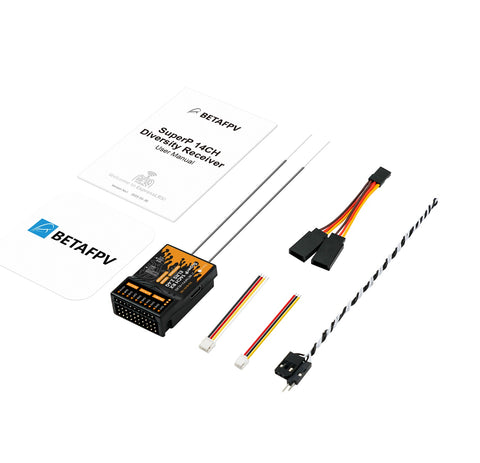
BetaFPV
Being the first to market! SuperP 14CH Diversity Receiver has been designed not only for long-range flying, aerial photography but also suitable for the application of fixed-wing, helicopters, RC cars, boats and etc. It has TCXO oscillator, two antennas, dual receiver chains, and Plug-N-Play ports, and adds more features, which support 14 channels for the external barometer, RGB light strip, and other external sensors that are currently under development. This 2.4GHz RX checks all the boxes of reliability for long-range flying, aerial photography, or FPV freestyle. With this receiver, users are able to get a more stable and reliable experience on RC models.
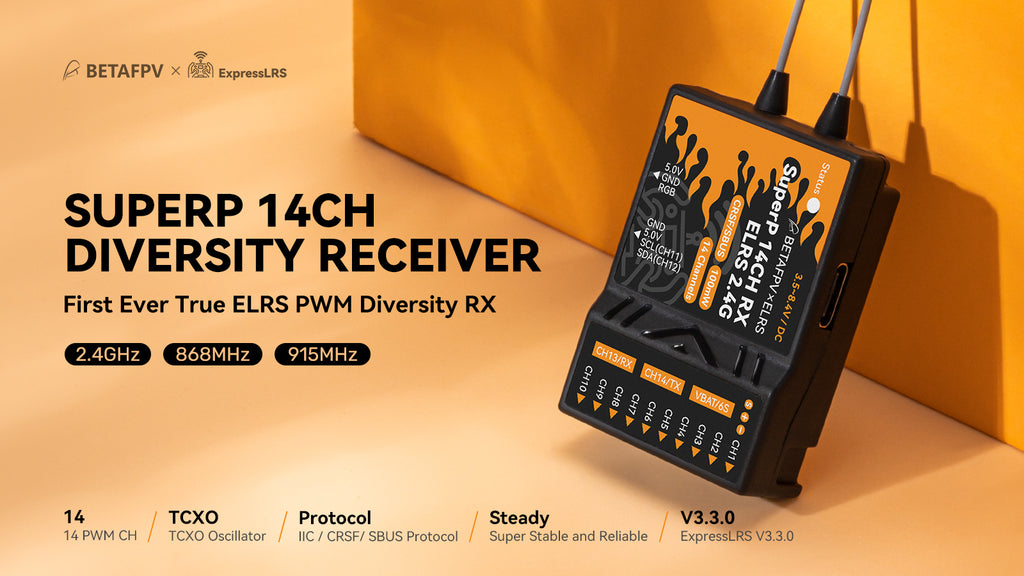
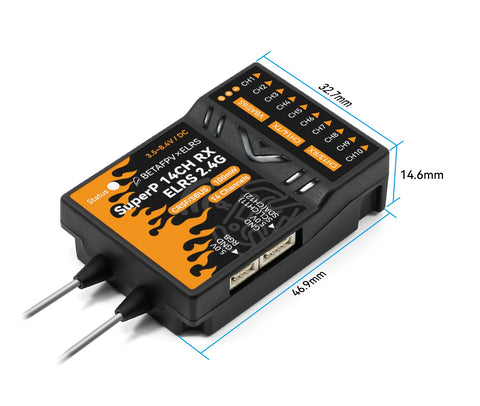
Based on BETAFPV SuperD True Diversity Receiver and Micro Receiver, the SuperP 14CH Diversity Receiver takes the good features of them. For example, 14 PWM channels, two antennas, dual receiver chains, TCXO oscillator, etc. Besides, it has an I2C serial port for more external sensors such as a barometer, and a 3-pin port is reserved for RGB light strip. With the combination of the good points, SuperP RX ensures stability and reliability for users.
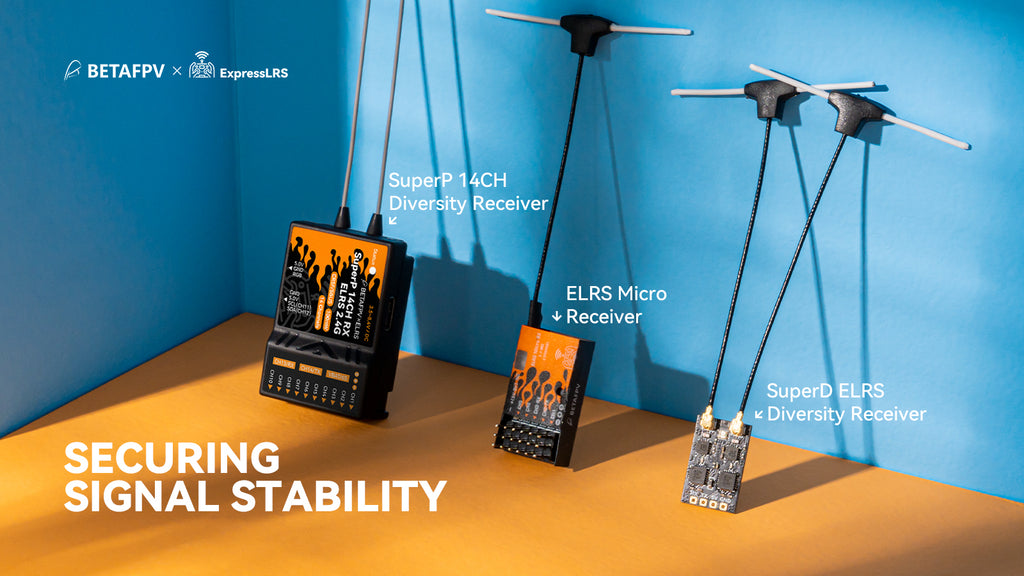
The ExpressLRS receiver protocol can be widely used for more models such as multi-rotors, fixed-wing planes, helicopters, RC cars, RC Boats and etc. The two antennas and dual receiver chains design greatly fulfill the requirements for long-range flying and aerial photography.

It is recommended to place the antenna separately and vertically as far as possible for a better signal.
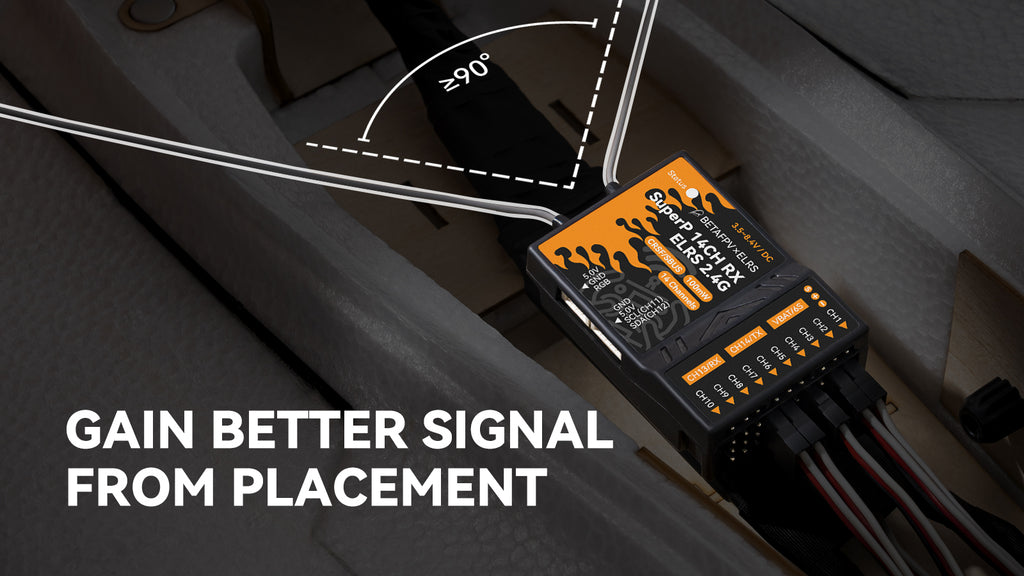
Know More About the TCXO
SuperP 14CH Diversity Receiver is built-in a TCXO (temperature compensated crystal oscillator), which is shared by two RF chips for a super accurate clock source. The true diversity receiver including two RF chips and PA+LNA will generate a large amount of heat when working. With the high-quality TCXO, it can withstand extreme temperatures with no fear of heat and cold, continuously outputting accurate frequency for long-range flight.
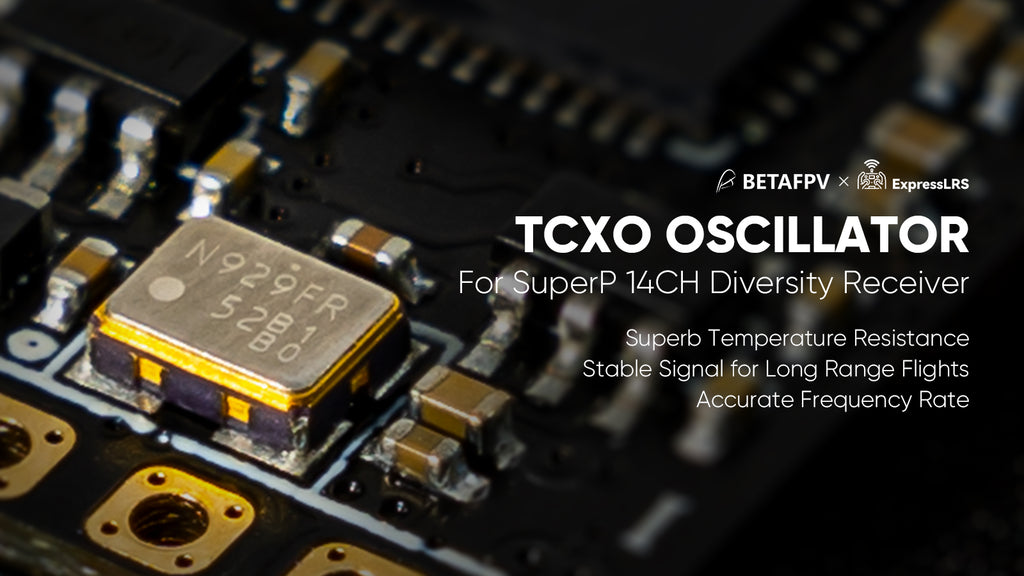
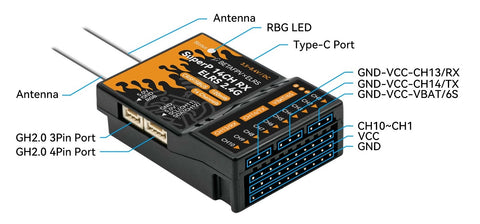
RGB status indication for SuperP 14CH Diversity Receiver is shown below.
| RGB Color | Status | Description |
| Rainbow | Fade effect | Power on |
| Green | Slow flash | WIFI upgrading mode |
| Red | Quick flash | No RF chip detected |
| Orange | Double flash | Binding mode |
| Orange | Triple flash | Connected, but mismatched model-match configuration |
| Orange | Slow flash | Waiting for connection |
| Solid on | Connected and color indicates packet rate |
The below picture shows the RGB light color for the 2.4GHz version corresponding to the packet rate.

Note: F1000 and F500 are packet rates in FLRC mode, providing faster modulation and lower latency, but at the same time having shorter reception distance than normal Lora mode. This mode is great for racers.
D500 and D250 are packet rates in DVDA (Deja Vu Diversity Aid) mode. This mode works at the F1000 data packet rate of FLRC mode, providing better link connection in the case of complex interference by sending the same data packet multiple times. D500 and D250 indicate that the same data packet is sent twice and four times respectively.
100Hz Full is the mode that can achieve 16-channel full resolution output at the 200Hz packet rates of Lora mode. Its receiving distance is equivalent to 200Hz.
Enter the configuration page via WiFi mode.
On the configuration page, users can set the PWM pin, CRSF pin, I2C pin, etc. The pin number corresponds to specified channels. You can refer to the chip I/O function table.
Note: Please do not modify other function pins.
| Pin | 13 | 15 | 2 | 0 | 4 | 9 | 10 | 5 |
| Main | CH1 | CH2 | CH3 | CH4 | CH5 | CH6 | CH7 | CH8 |
| Second | ||||||||
| Pin | 18 | 23 | 19 | 22 | 3 | 1 | 21 | 36 |
| Main | CH9 | CH10 | CH11 | CH12 | CH13 | CH14 | RGB | VBAT |
| Second | SCL | SDA | RX | TX | ||||
| Third | SBUS |
Note: VBAT is the battery voltage detection port, which supports 1~6S battery voltage detection.
When the RX is configured to use CRSF output, CH13 becomes RX and CH14 becomes TX.
When the RX is configured to use SBUS output, CH13 has no output, and CH14 becomes SBUS.
The CH11 and CH12 of the receiver have been configured as I2C serial ports by factory default. At this time, CH13 becomes CH11, and CH14 becomes CH12.
For example, I2C communication serial port settings are as follows:


Note: The CH11 and CH12 of the receiver have been configured as I2C serial ports by factory default. Then CH13 becomes CH11, and CH14 becomes CH12.
The default firmware of the SuperP 14CH Diversity Receiver uses the ExpressLRS V3.3.0 protocol and has no preset binding phrase. Therefore, the firmware version of the transmitter module must be ExpressLRS V3.0.0 or later versions. Both the receiver and transmitter module should not have any binding phrase.
Note: After the device has been successfully bound, the receiver will record the device, and future binding will be automatic. There would be no need to go through the binding process again.
The setting method is as follows:

Failsafe settings are as follows: The output value of the servo can be obtained when the out-of-control protection value is inputted and the system goes out of control.
Note: Do not click "Reverse". If you click the "750us", the failsafe value needs to be halved. When the failsafe value is greater than 1500, the mode will automatically switch to "On/Off" mode.
Channel output settings are as follows: Select the desired mode from the dropdown menu of the mode, and the following are descriptions of all output modes.
CRSF/SBUS output settings are specified below:



Note: When the receiver is configured to use CRSF output, CH13 becomes RX and CH14 becomes TX; When the receiver is configured to use SBUS output, CH13 has no output, and CH14 becomes SBUS.
